While Ryan and I were still in Medellín, and while we still had David, we all took an exotic fruit tour which enabled us to try sixteen different types of exotic fruits from the local market. We all found it to be very fascinating.
While on our tour, we learned that the most common use of fruit in Colombia (and in many South American countries) is to make juice. There are many fruits that are not especially sweet, but once they are drained and A LOT of sugar has been added, they make excellent juice. Colombians have a big sweet tooth so the sweeter, the better. Below are several examples of these fairly tart fruits before they are made into juice.
The alicita chontaduro fruit (peach-palm) is apparently an aphrodisiac. There was a good amount already prepared in a large tub for us to try and the texture and flavor reminded me of a mixture of sweet potato (or squash) and roasted chestnut. It was especially tasty with a little bit of salt and honey.
This fruit, the borojo was also an aphrodisiac. Most notable to me, aside from its appearance was its strong sweet and earthy odor. The fruits are collected and immediately fit into these bags because as they ripen, they completely lose their form. The borojo fruit is most often used as a sweetener to make juice, jam, wine and desserts. While we only tried it in juice, it had a mild sweet and earthy sort of flavor, just the way it smells.
We were able to try four different types of passion fruit. All have relatively slimy insides and remind me of alien babies. You just suck the mess of seeds down oyster style. Unless I close my eyes and slurp, I don’t get very far. The gulupa was my favorite as it seemed to be the sweetest.
This little guy had to be cracked open with a hammer. Once we had access to the pod-like fruit inside, we found a sweet floury past surrounding each seed which is supposed to be very high in energy. It is one of the richest vegetable foods known because of its high concentration of starches and proteins. It took a while to suck all the matter from around each seed and the texture was so strange that while the flavor was sweet and pleasant enough, I felt like I was eating saw dust which clung to the roof of my mouth.
Apparently, the guayaba (guava) is one of the most nutritious fruits a person can eat. The saying should go “A guava a day keeps the doctor away.” Colombians eat every part of the guava, including the peel. On the tour however, we skipped the peel because we could not wash the fruit before consumption.
Because this guy was so massive and David, Ryan and I were the only people on our tour, we didn’t get to try him. Bummer. But I must say he looks especially prickly along with his portliness. Everyone who knows me knows how crazy I am about blow fish, so there’s that. As far as I’m concerned, he gets points on presentation alone, just for showing up. And who couldn’t love a name as cool as soursop?!
I hate to admit that I don’t remember anything about these two except that the second one is not generally on the tour because it can not often be found in the market. Our guide was so excited when she found it that she added it on. But there was no card and I don’t remember what it is called. The gentleman that ran the stand offered the fruit to us to try for free since he was happy to be included on the tour. This was yet another example of how nice and friendly Colombians can be.
The coolest thing about the uchuva (cape gooseberry) was the peeling process. As they were one of the most inexpensive fruits at the market, we were allowed as many as we wanted. I only took two because the flavor was pretty tart and zingy as gooseberries tend to be.
The only things I remember about the feijoa (guavasteen or pineapple guava) was that the white fleshy fruit contained a lot of seeds and had an especially nice topical aroma. I think the flavor was surprisingly subtle for the initially promising fragrance.
My favorite was the pitahaya (dragon fruit) which was sweet and especially refreshing. Again, I ingested the black and crunchy seeds oyster style. Unfortunately for me, this one is also a natural laxative so I was only allowed one. Sad!
The most interesting fruit to me (or at least the one which was the most fun to eat) was called a mamoncillo (Spanish lime). About the size of a very small lime, you have to first bite through the skin which is surprisingly thin. Once you do this, the whole fruit snaps apart and a slimy ball with a large pit pops out. You eat this fruit by chewing on the little bits of flesh around the rubbery pit. It was sweet but mostly a lot of fun.
After about two hours, we finished the tour with a freshly made corn arepa de choclo and a refreshing juice. Not a bad way to spend a beautiful morning in Colombia.

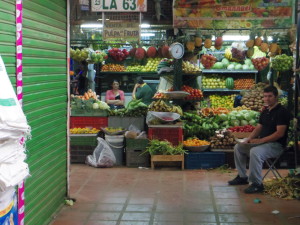
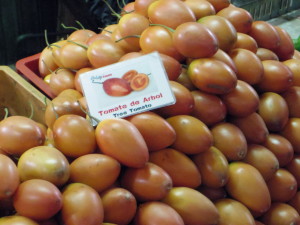
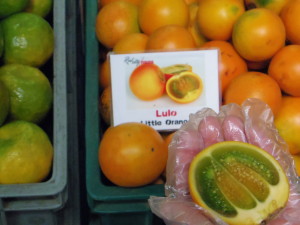
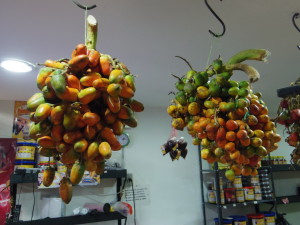
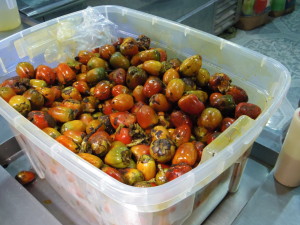
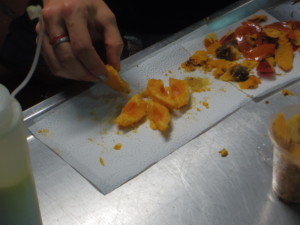
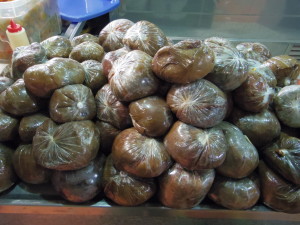
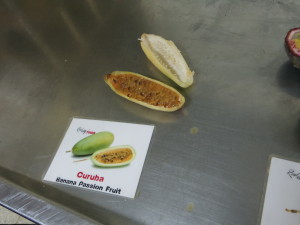

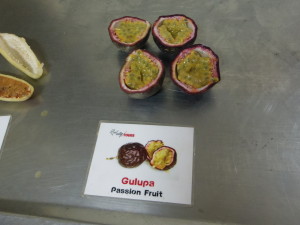
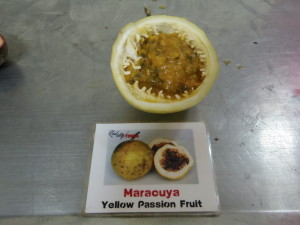

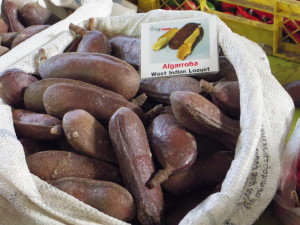
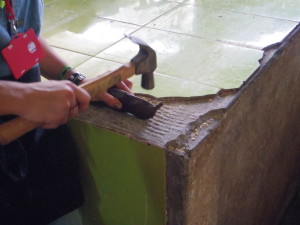
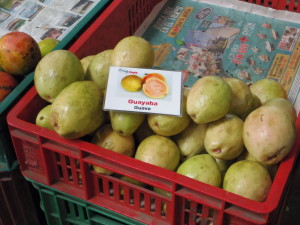
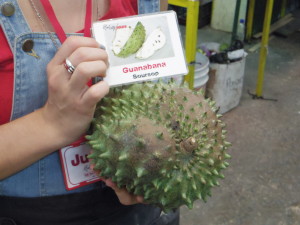
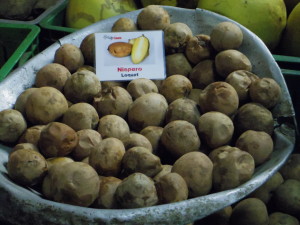
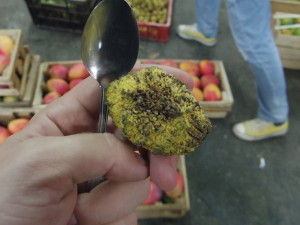
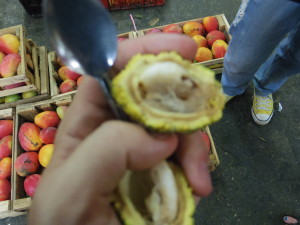
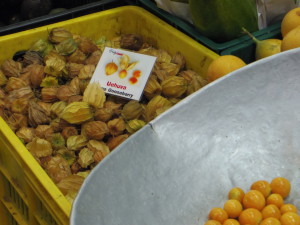
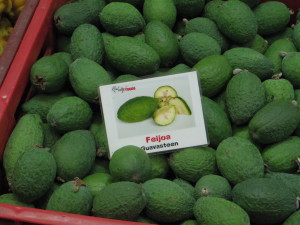
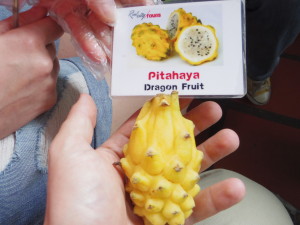
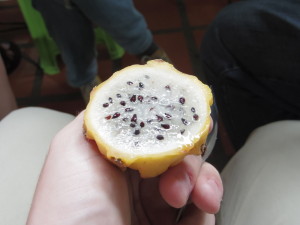
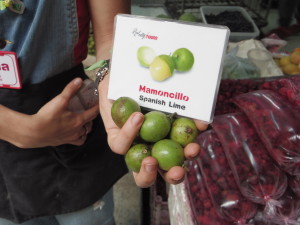
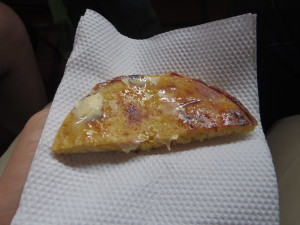
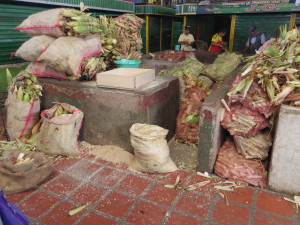
mmmm! exotic tropical fruites
A taste of Amanda's version of Heaven for sure.
I think you and Dad would have enjoyed it. There were some weird ones. Miss you!
Here it is August and I'm just now reading this. Thanks for the tour and wish I could have been there! Hope you are having fun with Matt and Sheree.
xo
Hi Laurel! Matt and Sheree left yesterday and we all had such a good time. Hoping you can join them one of these times. Maybe Asia?
Just how much experience do you have with aluen babies anyway?
Good point, but the texture reminded me of a sci-fi movie! Didn't want to see what happened when they got big and hatched…so I ate them!!!
Took one for the team! What a woman!
Roar!!!
nice
thanks for nice post.
nice work
Good work Admin
Fruit tour can be considered as healthy tour by the way good work. Last time have been France for some business work and I was at Lille Airport and I booked cheapest car at new place by tripindicator without interacting with humans. You can have details here http://www.tripindicator.com/car-hire/lille-airpo… for hiring a car at Lille Airport. Generally tripindicator gives all services of tour and travels in your range.
Good post admin thanks.
GUAYABA is a powerhouse fruit with 16 vitamins and nutrients, including three times the recommended daily allowance of vitamin C in 100 grams! It is juicy, sweet, slightly sour, and delicious.
The only things I remember about the feijoa (guavasteen or pineapple guava) was that the white fleshy fruit contained a lot of seeds and had an especially nice topical aroma.
Are you looking for a way to fix your Xiaomi phone's IMEI number? If so, then this post is perfect for you. Follow the instructions below and download the tool that will help repair your IMEI number in no time!
The content above is just an example. The following text should be replaced with opening paragraph of your own: